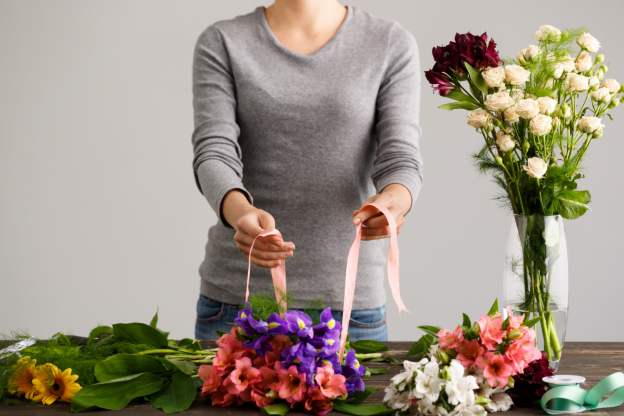Any skilled florist in Spring, TX, will tell you that successful flower arranging starts with understanding a few basic principles. This guide outlines the key principles that help create stunning bouquets and arrangements. You'll learn about color matching, flower selection, size balance, and design methods. These simple tips will help you make stunning flower displays that look professional and polished.
Understanding Color Theory
Color theory helps you select flowers that complement each other well in your arrangements. The color wheel shows which colors match best. Colors across from each other on the wheel create bold, eye-catching looks. Colors next to each other create calm, peaceful arrangements. Use this knowledge to select flowers that create the desired mood. Try mixing different color combinations to see what works best for you. Good color choices make your arrangements more attractive and help create the desired atmosphere.
Choosing the Right Flowers
Select flowers that complement your color scheme and have interesting shapes and textures. Consider bloom size, stem length, and the overall flower structure. Use large flowers, such as roses or lilies, as the main features, then add smaller flowers, like baby's breath, to fill in the spaces. Mix different textures - soft rose petals with spiky flowers or smooth leaves. Add greenery, such as ferns or eucalyptus, for a background color. Try incorporating flowers of different heights and shapes to make your arrangement more interesting and showcase your skills.
Focus on Proportion and Scale
Ensure your flowers are the correct sizes in relation to each other and your container. Proportion means balancing different flower sizes so that no single bloom dominates the entire arrangement. Scale means making sure your arrangement fits well in its space. Use bigger flowers as focal points and smaller ones to fill in gaps. Different sizes add depth and make arrangements more interesting. Practice with various flower sizes and placements until you find what looks balanced and professional.
Mastering Floral Design Techniques
Learn different methods to make your arrangements look more professional and creative. Try these techniques:
- Clustering: Group similar flowers together for strong focal points
- Spiral method: Arrange stems in a spiral pattern for natural-looking bouquets
- Crisscross method: Place stems in crossing patterns for structured designs
- Asymmetry: Use uneven placement for modern, artistic looks
Mix different flower textures and don't be afraid to try new combinations. Remember to cut stems at an angle and change the water often to keep the flowers fresh. With practice, these methods will help you create beautiful arrangements.
Incorporating Foliage and Fillers
Add greenery and filler flowers to make your arrangements look fuller and more complete. Foliage provides structure and texture. Use different greens, such as eucalyptus, ferns, or dusty miller, to add contrast and depth. Fillers like baby's breath or waxflower help fill empty spaces and tie everything together. Select foliage and fillers that complement your main flowers in terms of color and size. Try different combinations to see what works best. These supporting elements help make your main flowers look even better.
Maintaining and Extending Flower Longevity
Keep your arrangements fresh longer with proper care. Start with a clean vase to prevent bacterial growth. Cut stems at an angle to help flowers absorb water more effectively. Change the water every two days and keep the flowers away from direct sunlight and drafts. Use flower food to feed your blooms. Remove dead petals and leaves quickly to prevent decay. Spray flowers lightly with water daily to keep them moist. These simple steps will help your beautiful arrangements last much longer.
Related Topics:

